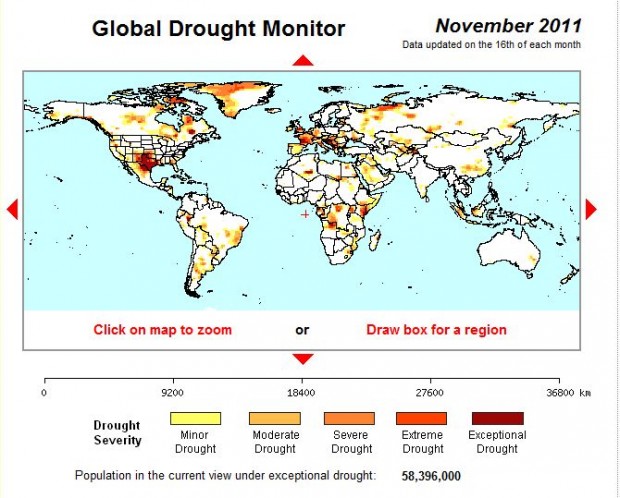Over the next two weeks, we will provide occasional updates on a global story few in Texas media otherwise cover – the goings-on in Durban, South Africa, at the UN Conference on Climate Change. (More formally known as COP-17 – the Conference of the Parties).
This 17th annual conference is designed to bring the world together towards a climate treaty that moves us past the Kyoto Protocol, and can help us work together in curbing emissions impacting the global climate. Obviously this is a story of some Houston interest from an energy perspective, but one of the goals of HOUmanitarian is also to illustrate the commonality of our social and environmental problems and our interdependence in seeking to address them. 
One of the largest emerging narratives at this years conference is agricultural impacts caused by climate and the availability of water. In parts of Africa, impacted by decades of drought, food security has become a profound problem. One of the major factors in the hunger crisis in the Horn of Africa this year is due to a extended drought. And similar problems have flared elsewhere in the world in recent years, including Russia, Asia and Australia. But obviously we are also aware of how this issue has impacted us here in Texas throughout the past year.
While the jury is still out on the Texas drought being either a short-term or long-term condition, farmers in our state and elsewhere in the world feel the pinch when water becomes more and more scarce. So as the world comes together in Durban to consider such issues as climate mitigation and transfer of technologies to help farmers and others deal with climate change, we thought the two videos below offer a interesting comparison and contrast.
Both tell the stories of corn (also known as maize) farmers in Texas and Kenya facing a similar challenge as their crops cannot grow sufficiently in time of drought. However, in each case the farmers access to mitigation technologies, underground water, and reliance on outside resources (such as experts and financing) are telling. How do we better bridge the gap evident in these scenarios in a world of 7-billion and growing, yet a desire to increase self-sufficiency among nations?
Growing Corn in Kenya During Drought:
Africa’s Climate of Change from Jenny Sharman on Vimeo.
Growing Corn in Texas During Drought:

